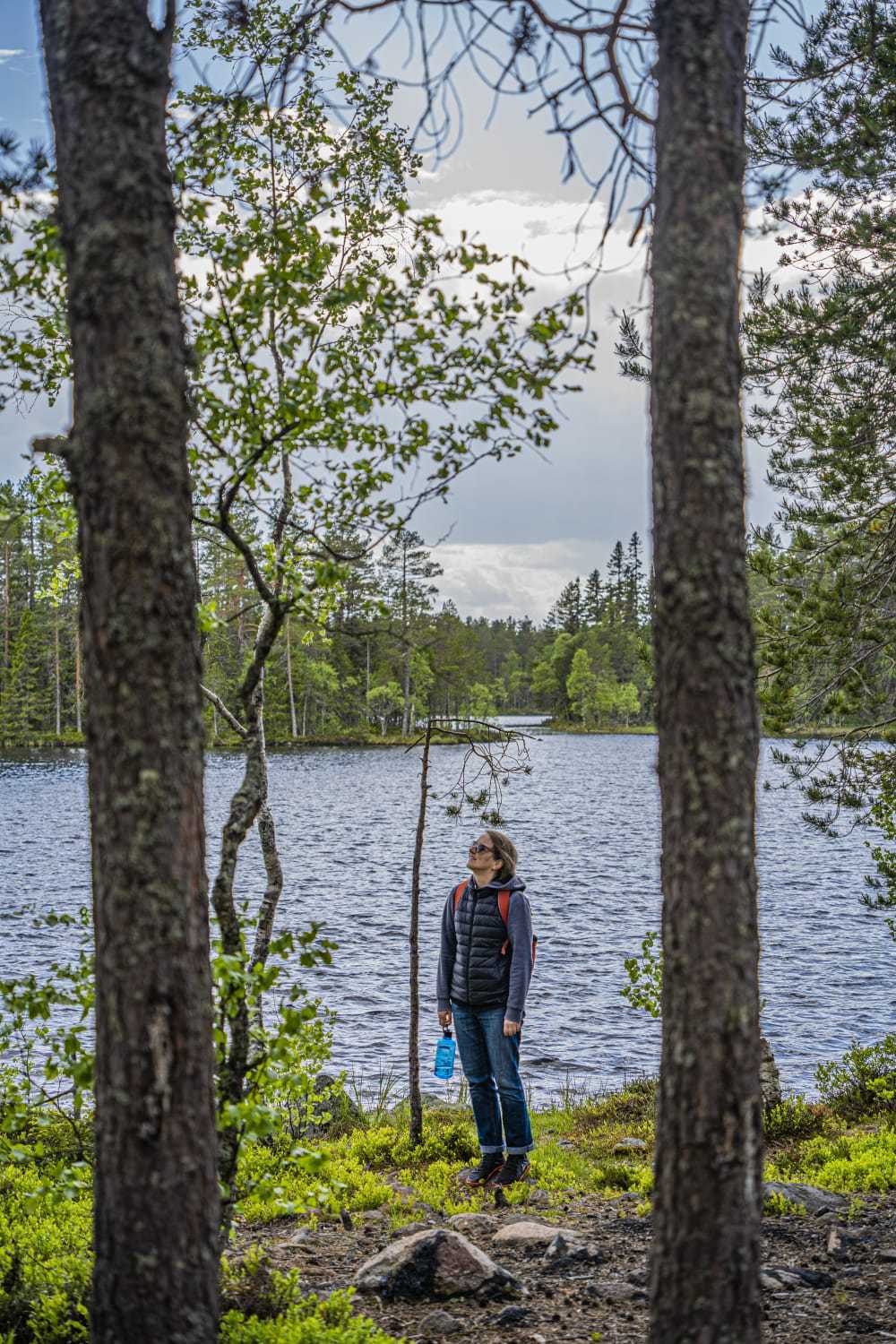
“If it can’t be reduced, reused, repaired, rebuilt, refurbished, refinished, resold, recycled, or composted, then it should be restricted, redesigned or removed from production” – Pete Seeger
Vegan leather, like vegan milk and vegan meat, is a product that imitates a popular animal-derived product – but without harming or abusing animals. The word ‘vegan’ has only recently become widely used, but it might not be long before the traditional leather industry bans the phrase – just as the dairy industry has been campaigning to ban plant-based products’ use of words like cheese and milk.
What’s the appeal of ‘real’ leather anyway?
At a first glance: longevity and durability. Leather has been used in one way or another for millennia. The first leather sandals date back to 1200 BC, in Ancient Greece. From shoes to book binding, leather has been around for so long that it isn’t going to disappear overnight. With an increasing human population, and our appetite for ‘stuff’, the manufacture of leather has also increased, with new industries (like the car industry) in need of such durable material.
But imagine what industrialised production of leather means for the animals used in the process. Gone are the days of Ancient Greek sandals: we have mechanised the killing of beings to create commodities – including non-essential accessories – and for the whims of the fast fashion industry.
Not only this, but processing animal skin is toxic and has a damaging environmental impact. The tanning process requires a cocktail of toxic chemicals, including arsenic and cyanide. These chemical treatments turn a natural material into a non-biodegradable one (only those dyed naturally are biodegradable). The health of the workers in these industries is negatively impacted, too. Sure, there are some older, less damaging processing techniques – but they can’t cancel out the damage caused by industrialised production and factory farming.
As awareness of these realities has grown, so has the desire to produce leather alternatives.

A few decades ago, what we now call vegan leather was known as fake, faux, artificial, or synthetic leather. If these words sound plasticky, you’re right. Then, plastic was seen as an exciting new replacement for leather; that’s how pleather was born: an imitation leather made from polyurethane (also known as PU leather).
How it was made seemed less important than its replacement of animals’ processed skin. Overlooking the long-term consequences of introducing new materials into our lives has been all too prevalent in humanity’s industrial era.
However, with the vegan leather industry expected to be worth $89.6 billion by 2025, according to this study, the sustainability of the materials used today demand investigation.
So, is vegan leather sustainable?
Vegan leather products sound appealingly ethical in theory, yet often fail the sustainability test in practice. That’s why we need to ask the right questions before buying a product that claims to be vegan. So:
👉 Is the vegan leather product in question made from plastic or plant-based vegan materials?
Unfortunately, cruelty-free does not necessarily mean sustainable; in the rush to replace animal products like leather and fur, plastic materials were the cheapest and easiest method.
Sure, those who prioritise animal rights over other environmental issues, such as non-recyclable waste, would be happy with such a product. But a cruelly-free approach should also take into account one of the biggest ecological catastrophes of our times: plastic pollution.
Plastic of all shapes, sizes, and consistencies chokes the oceans and rivers, killing millions of creatures every year, from birds to whales. It is also slowly poisoning humans, too, through microplastics now found everywhere, including the placentas of unborn babies.
Plastic-based vegan leather has a large ecological footprint, since it’s made entirely from polyurethane or synthetic materials blended with other non-eco-friendly ingredients. Wearing clothes because they’re vegan, but which are made of plastic, is like protesting climate change while shovelling coal into your steam engine.
If the product isn’t biodegradable, and the company doesn’t even consider recycling or reusing their own products, then the product is not sustainable. An environmentally viable system to deal with discarded products is often overlooked by the manufacturing industry in general.
Does this mean that plant-based vegan leather is sustainable?
In theory, yes. But even plant-based leather can include resins and plastics that have a negative impact on the environment (like polyvinyl chloride or PVC). Pinatex is a case in point: it uses cellulose fibres extracted from pineapple leaves – but also petroleum-based resin.
👉 We should ask the same questions, regardless of what the label promises: is this product 100% biodegradable? Can it be recycled or reused? Does it have a low-impact production process?
Bamboo, fungi, cacti, cork, and mulberry leaves are just a few of the natural materials used (to varying degrees) in the production of vegan leather. Often, it’s plants’ inedible, disposable parts that are used: bark, leaves, and sometimes even waste (like coffee grounds or wine waste). Fungi and peels from fruits like apples can already successfully replace plastic. These materials are often byproducts from other industries, decreasing the ecological impact of this type of leather even further.
Luckily, some companies are paying attention to every aspect of production – from supply chain to recycling – making important steps towards a circular economy.
Here are a few of the materials currently making positive waves in the vegan leather industry:
Fique plant
The company Fiquetex uses fibres from the fique plant, with a natural rubber latex as a bonding agent, making their products 100% biodegradable. At the end of its life, this vegan leather can be buried, returning nutrients to the soil.
Mirium
The company behind this “hybrid composite material”, which leverages “the strength and diversity of virgin and recycled plant matter”, wants to make cheap, “cow-free” leather, but without compromising on quality.
They pride themselves on the material’s durability, and its production in a “circular system that is free of petroleum-based plastics.” Their raw inputs are 100% natural and biodegradable, and their finished materials are never coated in polyurethane or PVC.

Durability in sustainable vegan leather is a big plus, as its generally shorter life is one of the main drawbacks of plant-based alternatives to animal leather.
Mycelium
By using “infinitely renewable” mycelium – the root structure of mushrooms – Bolt Threads produces just one of the many materials taking cues from nature.
What’s next?
Issues such as durability and quality have seemingly been solved by groundbreaking innovators, so making sustainable leather-like products widely available should be only a matter of time. But incentives from regulatory bodies and a helping hand from established companies would certainly help.
Plant-based leather may be yet to go mainstream, but with imagination and innovation saving the day, sustainable vegan leather is here to stay.
However, do remember that:
Plastic is still an issue
While it’s refreshing to see innovative trends rapidly changing the manufacturing landscape, let’s not forget that the plastics market is still expected to grow in the coming years. By encouraging sustainable projects, we can help turn the tide on non-essential plastics.
Reuse plastic-based and animal leathers
While we need to phase out non-essential disposable plastics, tons of plastic is currently littering the Earth. It takes hundreds of years for plastic to disintegrate, so reusing it is necessary – but within sustainable structures that don’t create more waste.
It’s worth creating new products from old plastics, but not creating new virgin plastic (the resin produced directly from natural gas or crude oil).
The same goes for animal products: buying secondhand leather saves it from the landfill or the incinerator. Unless you feel strongly about wearing the skin of a dead animal, reusing even unethical clothes is preferable to buying new ones. ♻️
Words matter
In the already-established tradition of greenwashing, hopeful words that push us towards ethical choices are often used by companies to manipulate consumers into buying their products. Labels like “eco”, “green”, “sustainable”, “vegan”, and “cruelty-free” are frequently plastered over products that have little to do with the values underpinning sustainability.
A single natural ingredient – even if it represents a small percentage of a product’s ingredients and has been unethically sourced – has a considerable chance of becoming the main element of a promotional campaign. This type of greenwashing is common in advertising – and most consumers won’t dig deeper.

We need to pay more attention and not fall for fake promises.
Yes, many of us are busy, and regulatory bodies are not yet in place to penalise every inaccurate wording, but it’s worth the effort. Think of it as a way to flex your ethical muscle.
People matter
We have mainly discussed materials here, but remember that we should also always consider other aspects when buying a vegan leather product:
- Who made it?
- What’s the company’s track record on human rights and fair trade?
- Are they a big corporation taking baby-steps with big PR campaigns, or an independent start-up building their entire business on circular system models?
Less is more
Sustainable lifestyles should also focus on buying only what we need, when we need it. The less we buy, the more time and interest we gain for looking into the story of the products we want to invest in. It can also strengthen our commitment to a particular sustainable product.
It’s not the number of items we own that’s important, but their quality and the values that made them. Talk to your friends and family about these new, innovative, cruelty-free plant-based products; put them on your gift list; wear them; showcase them. We can always do more than just buy stuff, no matter how ethically.
Have you been using or wearing any vegan leather? Any stories you’d like to share?
Featured image by Mathew Schwartz on Unsplash
Earth.fm is a completely free streaming service of 1000+ nature sounds from around the world, offering natural soundscapes and guided meditations for people who wish to listen to nature, relax, and become more connected. Launched in 2022, Earth.fm is a non-profit and a 1% for the Planet Environmental Partner.
Check out our recordings of nature ambience from sound recordists and artists spanning the globe, our thematic playlists of immersive soundscapes and our Wind Is the Original Radio podcast.
You can join the Earth.fm family by signing up for our newsletter of weekly inspiration for your precious ears, or become a member to enjoy the extra Earth.fm features and goodies and support us on our mission.
Subscription fees contribute to growing our library of authentic nature sounds, research into topics like noise pollution and the connection between nature and mental wellbeing, as well as funding grants that support emerging nature sound recordists from underprivileged communities.

